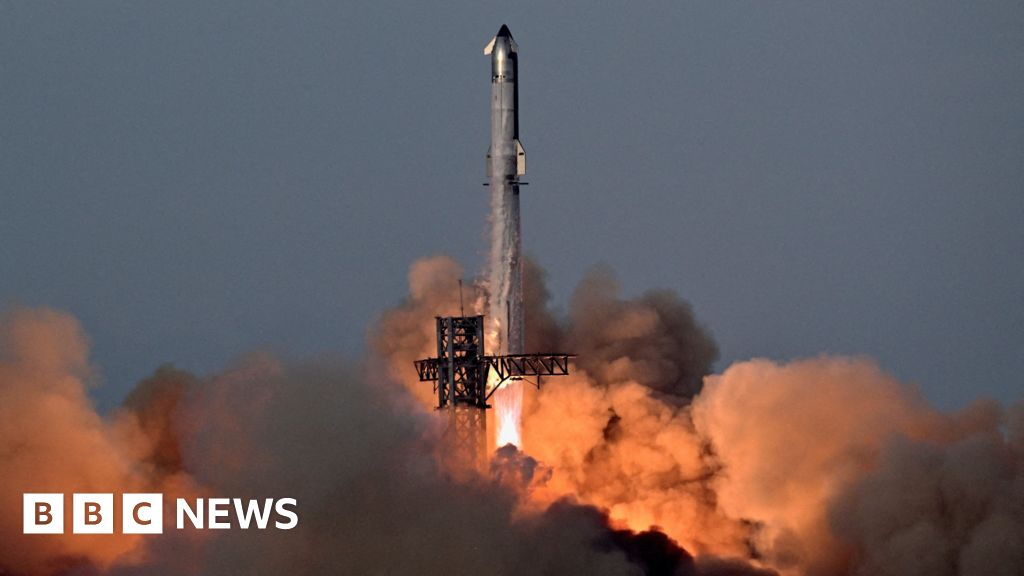SpaceX has pulled off a successful test flight of its newest generation rocket Starship, reversing a trend of disappointing failures. The world's largest and most powerful rocket blasted off from Texas just after 18:30 local time (23:30 BST) for a nail-biting 60-minute flight. Parts of the engine appeared to explode at one stage, and flaps on the side of the rocket caught fire and swung from side-to-side. US space agency NASA plans to use Starship to send humans to the Moon for its ambitious Artemis program in 2027.
Great work by the SpaceX team!!, posted SpaceX CEO Elon Musk on X. This success comes after three of Starship's launches ended in failure this year, including an incident when one rocket exploded on the launch pad in June. Starship is the largest and most powerful rocket built to date, composed of a booster named Super Heavy and the spacecraft Starship. The test flight started promisingly with all 33 engines firing up, leading to the booster separating from the spacecraft after about seven minutes.
Starship continued its ascension, reaching a maximum height of almost 200 kilometers before coasting around the planet. SpaceX has designed Starship as a fully reusable transport system capable of carrying humans to the Moon and Mars. The first version of the rocket had five successful launches, but attempts to launch the new version had previously ended in catastrophic failures.
The successful execution of the chopstick maneuver, which caught the rocket booster when it returned to Earth, was a significant achievement, especially after three failed attempts and a major explosion in March that scattered debris over the Bahamas. As SpaceX aims to certify Starship for human travel as early as next year, it has been reported that Mr. Musk is keen on initiating un-crewed flights to Mars in the next 12 months.
Despite the setbacks, the recent success of Starship could restore confidence in SpaceX's capabilities as it prepares for future missions, including the NASA Artemis program which may need to adjust its timelines for the 2027 Moon mission.
Great work by the SpaceX team!!, posted SpaceX CEO Elon Musk on X. This success comes after three of Starship's launches ended in failure this year, including an incident when one rocket exploded on the launch pad in June. Starship is the largest and most powerful rocket built to date, composed of a booster named Super Heavy and the spacecraft Starship. The test flight started promisingly with all 33 engines firing up, leading to the booster separating from the spacecraft after about seven minutes.
Starship continued its ascension, reaching a maximum height of almost 200 kilometers before coasting around the planet. SpaceX has designed Starship as a fully reusable transport system capable of carrying humans to the Moon and Mars. The first version of the rocket had five successful launches, but attempts to launch the new version had previously ended in catastrophic failures.
The successful execution of the chopstick maneuver, which caught the rocket booster when it returned to Earth, was a significant achievement, especially after three failed attempts and a major explosion in March that scattered debris over the Bahamas. As SpaceX aims to certify Starship for human travel as early as next year, it has been reported that Mr. Musk is keen on initiating un-crewed flights to Mars in the next 12 months.
Despite the setbacks, the recent success of Starship could restore confidence in SpaceX's capabilities as it prepares for future missions, including the NASA Artemis program which may need to adjust its timelines for the 2027 Moon mission.





















